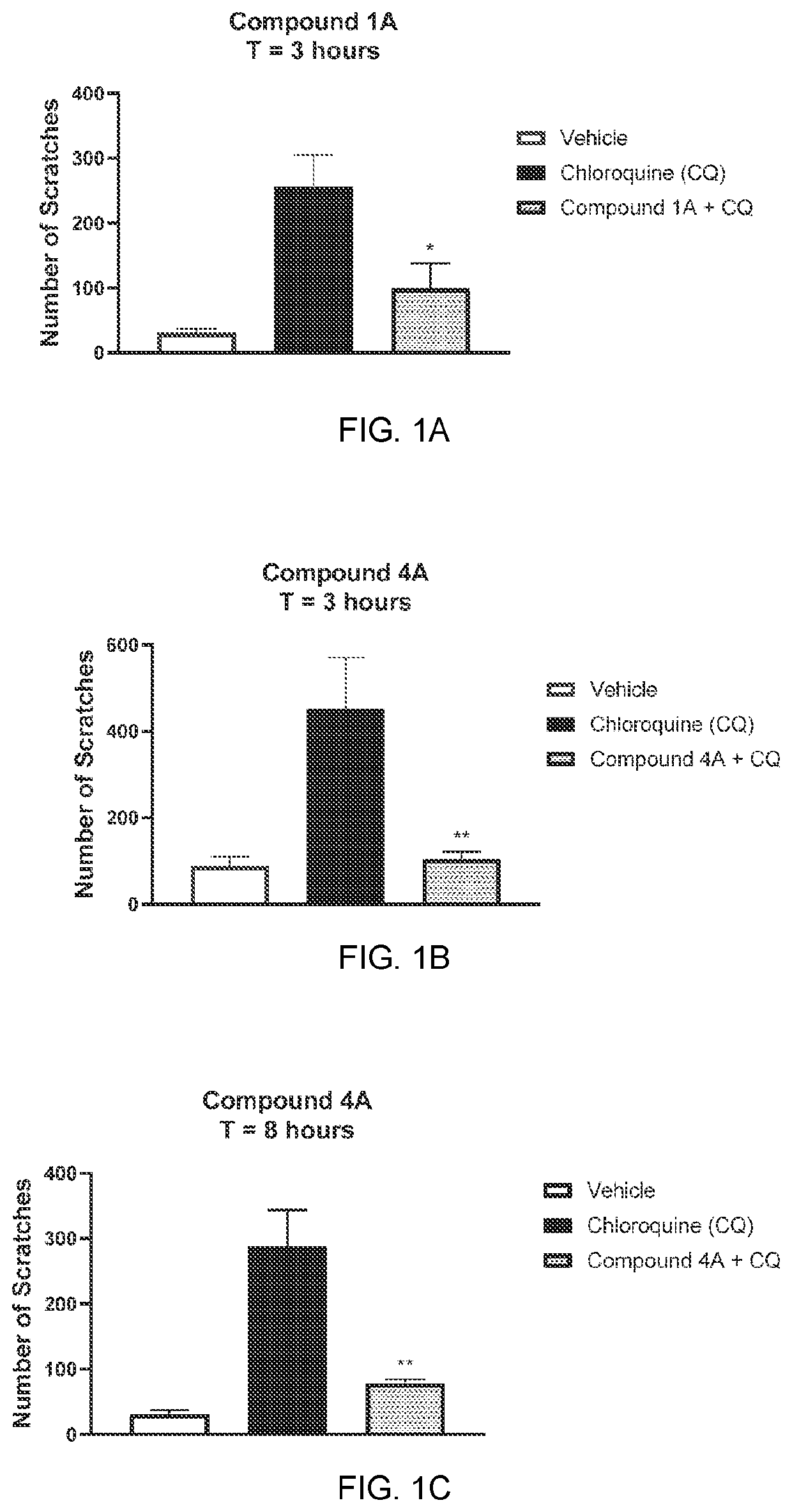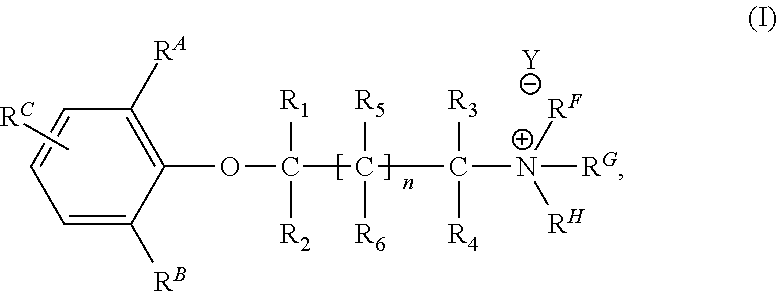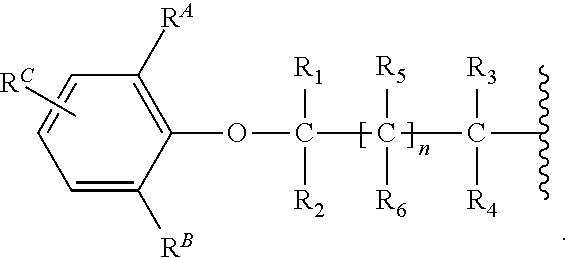Charged ion channel blockers and methods for use
- Summary
- Abstract
- Description
- Claims
- Application Information
AI Technical Summary
Benefits of technology
Problems solved by technology
Method used
Image
Examples
example 1
of Compounds 1A′ to 51A′
General Abbreviation Definitions
[0189]ACN acetonitrile
AcOH acetic acid
aq. aqueous
BBr3 boron tribromide
CDCl3 D3-chloroform
δ chemical shift (ppm)
DCM dichloromethane
DIPEA diisopropylethylamine
DMAP 4-dimethylaminopyridine
DMSO dimethyl sulfoxide
Et2O diethyl ether
EtOAc ethyl acetate
h hour
HPLC high performance liquid chromatography
MeOH methanol
mHz megahertz
MS mass spectrometry
m / z mass to charge ratio
NaCNBH3 sodium cyanoborohydride
Na2SO4 sodium sulphate
NMR nuclear magnetic resonance
TEA triethylamine
THF tetrahydrofuran
UV ultraviolet light
Synthesis of 1-benzyl-1-(2-(2, 6-dimethylphenoxy) ethyl) azepan-1-ium Bromide
[0190]
Synthesis of 2-(2-bromoethoxy)-1, 3-dimethylbenzene
[0191]To a stirred solution of 2, 6-dimethylphenol (0.50 g, 4.1 mmol) in acetonitrile (8.0 mL) was added potassium carbonate (1.7 g, 12.3 mmol) and 1, ...
example 2
n of Nav1.7 Current
[0232]The compounds were synthesized according to the described methods and tested for the ability to inhibit voltage-gated sodium channels.
Cell Culture
[0233]NaV1.7 was expressed upon induction with tetracycline. Cells were cultured in DMEM containing 10% dialyzed Fetal Bovine Serum (VWR, Radnor, Pa.), 1% Glutamax (VWR, Radnor, Pa.), 1% Penicillin-Streptomycin (VWR, Radnor, Pa.), 100 mg / L Hygromycin (Thermo Fisher Scientific, Waltham, Mass. and 5 mg / L Blasticidin (Alfa Aesar, Haverhill, Mass.). Cells were grown and maintained at 37° C. in a humidified environment containing 10% CO2 in air. Cells were detached from the culture flask for passage and harvested using 0.05% Trypsin-EDTA (Thermo Fisher Scientific, Waltham, Mass.). To induce NaV1.7, cells were induced with tetracycline (0.1-1 μg / mL, IBI Scientific, Peosta, Iowa) the day before recording and plated onto 24-well plates. Cells were washed with DPBS (VWR, Radnor, Pa.), trypsinized and then triturated five ti...
example 3
tic Activity
[0243]The anti-pruritic activity of representative compounds of the invention was determined in C57BL / 6 mice according to similar published procedures (Ramachandran et al, JPET 2020). Briefly, mice were anesthetized using 2.5% isoflurane and a solution of test compound (10 mg / mL, 100 μL) was topically applied to a shaven area at the nape using a solvent pipette (T=0). Test article was messaged into the skin until complete absorption occurred. Chloroquine (100 μg in 50 μL 0.9% saline) was injected intradermal at the indicated time to induce itch. Scratching activity was monitored over 40 minutes using an infrared camera.
[0244]Representative compounds of Example 1 significantly reduce chloroquine-induced itch up to 8 hours a following topical administration. See FIGS. 1A, 1B and 1C.
PUM
| Property | Measurement | Unit |
|---|---|---|
| Volume | aaaaa | aaaaa |
| Volume | aaaaa | aaaaa |
| Fraction | aaaaa | aaaaa |
Abstract
Description
Claims
Application Information
 Login to View More
Login to View More - R&D
- Intellectual Property
- Life Sciences
- Materials
- Tech Scout
- Unparalleled Data Quality
- Higher Quality Content
- 60% Fewer Hallucinations
Browse by: Latest US Patents, China's latest patents, Technical Efficacy Thesaurus, Application Domain, Technology Topic, Popular Technical Reports.
© 2025 PatSnap. All rights reserved.Legal|Privacy policy|Modern Slavery Act Transparency Statement|Sitemap|About US| Contact US: help@patsnap.com



